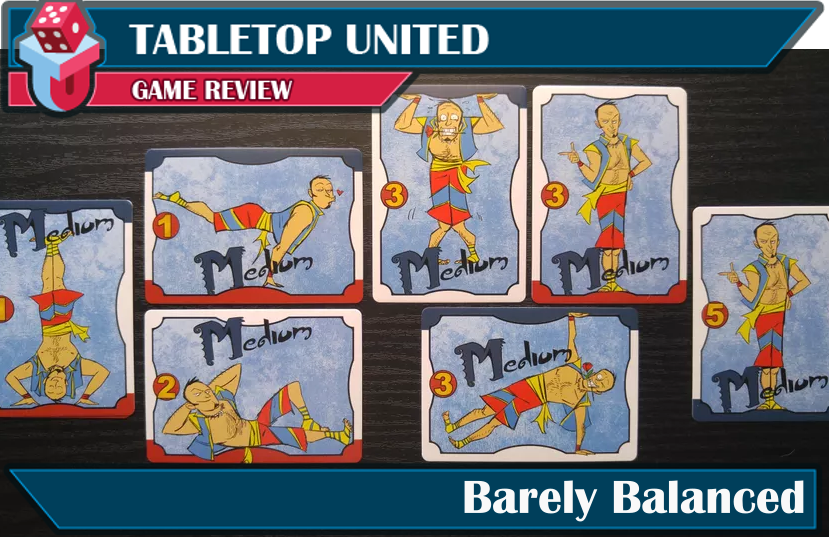
Barely Balanced
Designer: Max Holliday
Artist: Thomas Boatwright
Publisher: Ginger Ale Games
Year Published: 2017 (2021 with expansion)
No. of Players: 2–4
Ages: 8+
Playing Time: 15–30 minutes
Main mechanic / Theme: trick building / Acrobats
Come see the human pyramid juggling the deadly flaming batons!
Find more info on BoardGameGeek.com
Overview:
Barely Balanced is a trick building card game for the entire family. Instead of making sets and runs with the cards, you combine cards for the different acrobats and the props they are using to perform a trick. I was given a set of cards of Barely Balanced with the Troublemakers Expansion by the designer while attending the 2022 SaltCon Gaming Convention.
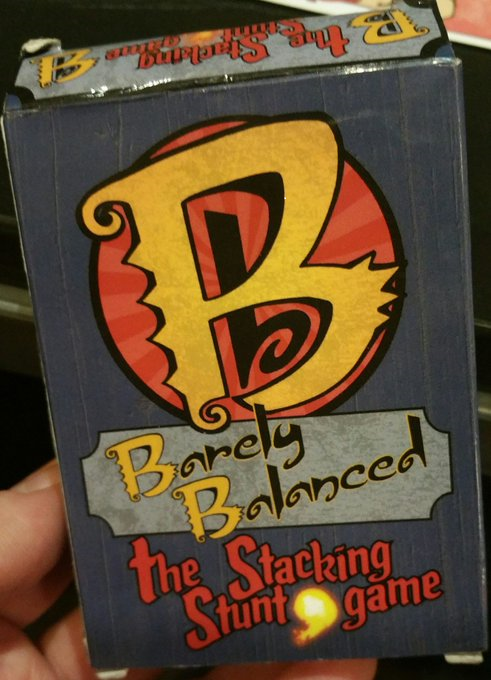
Gameplay and Mechanisms:
Each player uses their cards to create/perform tricks. A round is won by the person who earns the most points from the tricks they play during that round. The first player to win three rounds wins the game.
The cards consist of Member cards and Danger cards.
Members are of three sizes: Large, Medium, and Small. The scoring number is always on the left side of the cards. This is important because it directs you to what is needed above and below that Member. A Blue, Red, or yellow border must have another Member with a matching border touching in that position. White borders signify the top or the bottom of the Members performing (base or ceiling). There can only be one size of each Member in the trick. When a Member of the trick is vertical (tall) the rest of the Members above them must also be in the tall position.
Danger cards add value to the trick by adding complexity. When playing a trick with a Danger card the player needs to describe how it is affecting the trick to gain the bonus.
The first round of the game starts with each player having six cards in their hand, eight cards turned up in the center of everyone, and the remaining cards placed for a draw pile.
On your turn you can play a trick, with all the components needed and desired. You can trade one of your cards with one face up on the table. Or you can take one card from the draw pile.
The round ends when a player lays down all of their cards from their hand as one or more complete tricks. The rest of the players can play one last trick from their hand, no drawing or swapping. Whoever scored the most points with their tricks wins the round. Players who still have cards decide if they want to keep any or all of those cards for the next round.
On the next round all the cards played, in the center, and the draw pile are reshuffled. Players get six new cards to add to their existing hands. The center cards are reset, and the draw pile is placed. The next round begins.
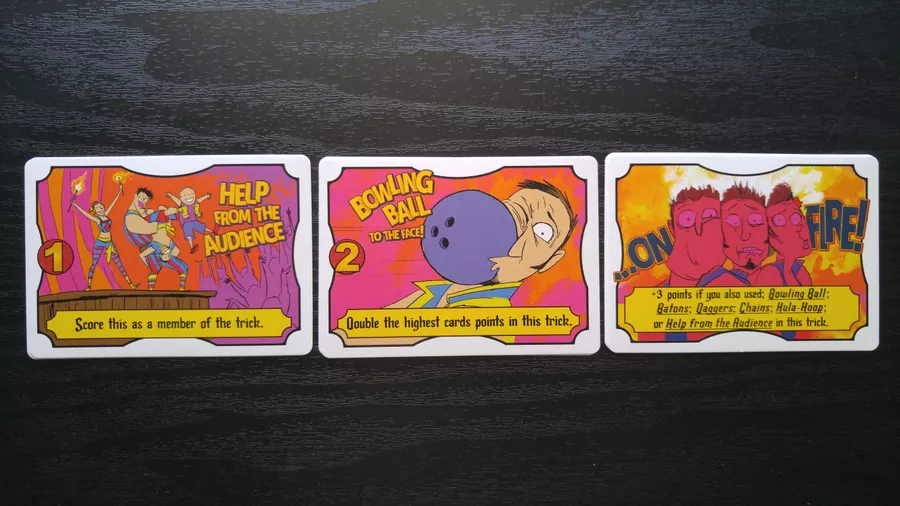
Theme, Artwork and Illustration, Graphic Design and Layout
The artwork is by Thomas Boatwright and it combines the mood of the game into the cards. All of the art is appropriate for all players and includes some diversity. Players with difficulty gripping may need help. The colors are bold and don’t correspond to the more common forms of colorblindness.
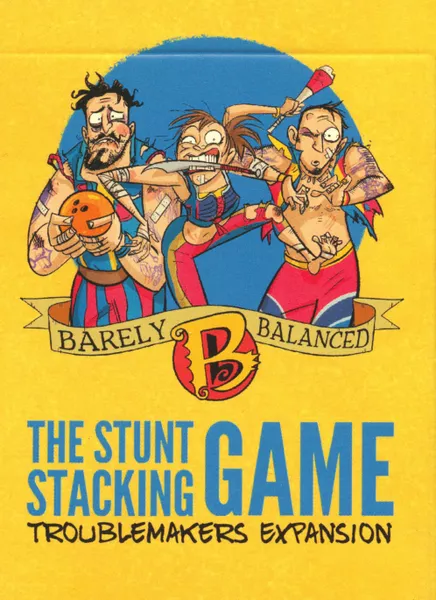
What Worked:
The scoring mechanism works well for younger players. This also means you don’t have to maintain a score sheet during the game
Final Thoughts:
Barely Balanced is a quick and lively game. Our younger players had no problem learning how to play, but they tried to sneak a few tricks that didn’t meet the requirements. They could soon play on their own.
The scoring made it easier for the younger players. Since each round is scored separately, they didn’t need to be concerned about a score sheet to track the score of the tricks of previous rounds. We thought it would work great just to have tokens (pennies, pretzels, rocks) available to track the number of rounds won.
Barely Balanced is a single pack of cards with the rules small enough to fit into the box. This makes it a good addition to your cabin and travel games. The scoring also makes it easy to play anywhere.
I recommend Barely Balanced for those looking for a family game that once learned younger players can play without needing help.
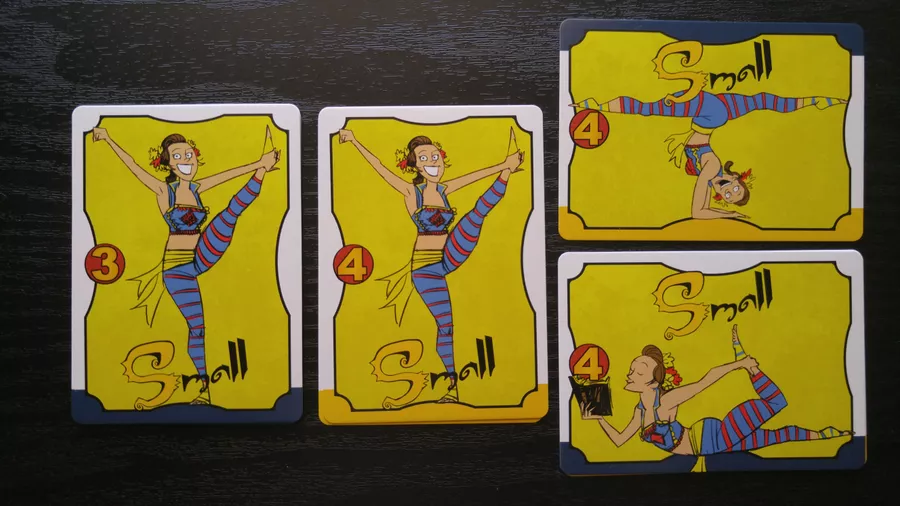
*images were not provided for this review, all images here are borrowed from boardgamegeek.com
About the Author
Daniel Yocom does geeky things at night because his day job wouldn't let him. This dates back to the 1960s through games, books, movies, and stranger things better shared in small groups. He's written hundreds of articles about these topics for his own blog, other websites, and magazines after extensive research along with short stories. His research includes attending conventions, sharing on panels and presentations, and road-tripping with his wife. Join him at guildmastergaming.com.

